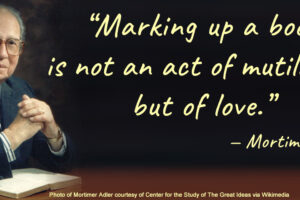This is a short series of posts on how authors fail themselves. You may be one of these authors. You may not be one but know one. Or, you may nod your head and say, “I used to do that. I don’t do it anymore.” I hope that is true. On we go to the final four of 12 Ways To Fail As An Author. Part One is here. Part Two is here.
Ninth: Not doing research on your publishing options.
This is so easy, it amazes me how many new authors don’t do it. If you are choosing a traditional publishing model, and this is your first book, you will need to create a book proposal.
If you are choosing a traditional publishing model and this is your second book, but you want to change publishers, you will need to create a book proposal. If you are choosing self-publishing, your options are abundant. Some print on demand publishing companies designed to help you get into print ask for a proposal. Some don’t. You can, effectively, do a Kindle book on your own, with the guidance provided by others, online, but be careful about that. Not everyone helps create a professional product to be proud of.
Do not let this wait until the book is finished. Be informed about your publishing options.
Tenth: Not understanding how powerful your cover is.
I’m continually baffled by bad book covers. I’m specifically referring to covers where the title is hard to read, or the colors clash, or the typeface is too big or too small, or too nothing.
Whether you like it or not, covers do sell books. That includes the spine and the back cover, with a blurb, testimonials, and your picture. If you leave even one of these things out, you risk being relegated to the remains pile. Don’t do it. Find a good book cover designer.
Eleventh: Forgetting the spine and back cover.
Oh, am I repeating myself? Yes, I am. Why? Because too many new, just getting started, authors fail to create a powerful back cover. They rush the book to print (or Kindle, but let’s face it, Kindle offers print, you need to do both for a full-fledged book), and have a paragraph on the back cover, their image, and their bio.
While that’s nice, and appropriate, where, I ask myself when I see covers like this, are the testimonials? If you think the kind words of others don’t count, you are mistaken. Regardless of my association with the people providing the testimonials, I am eager to see them because it means someone else qualified the book for me. Someone who knows the topic, the author, and the readership has read the book and offered insight.
This delights me to no end because, as a reader, I am lazy. I would rather KNOW what I’m getting into with the book, than take it at face value and read it. Moral of this story – find readers ahead of time and put some testimonials on your cover. Oh, the other thing, for the spine, you’ll need an ISBN and a publishing or ‘imprint’ name.

Twelve: Writing too much about you and not enough about your life, your story.
Who is behind the “you” that shows up at networking events. You need to tell a story, not give a report. Too many first authors give a report – they act as outside eyeballs giving a word by word description of what happened here or there, and when.
Telling a story about your life – about your struggles, your challenges, your achievements, is no mean feat. Not everyone can do it. Not everyone should do it. I say they should, all the time, because even the average citizen would do well to document their life for their family legacy, but when it comes to business, some people need to hire ghost writers. And that’s a story for another day.
For now, I want you to think of your story as “once upon a time there was a girl” and she had a dream. Or she woke up one day and decided to PIVOT in her life. Or she discovered a desire to be more than she was. And go from there. Go from there on a journey with this girl, who is you, of course, and mention all the things that happen along the way.




![featured image for blog post, [TfTi] Ya Think?!? 'Self-Publishing's Output and Influence Continue to Grow' by Tom Collins](https://masterbookbuilders.com/wp-content/uploads/2024/11/IndieAuthorInfluenceGrowing-300x200.jpg)

Leave a Reply